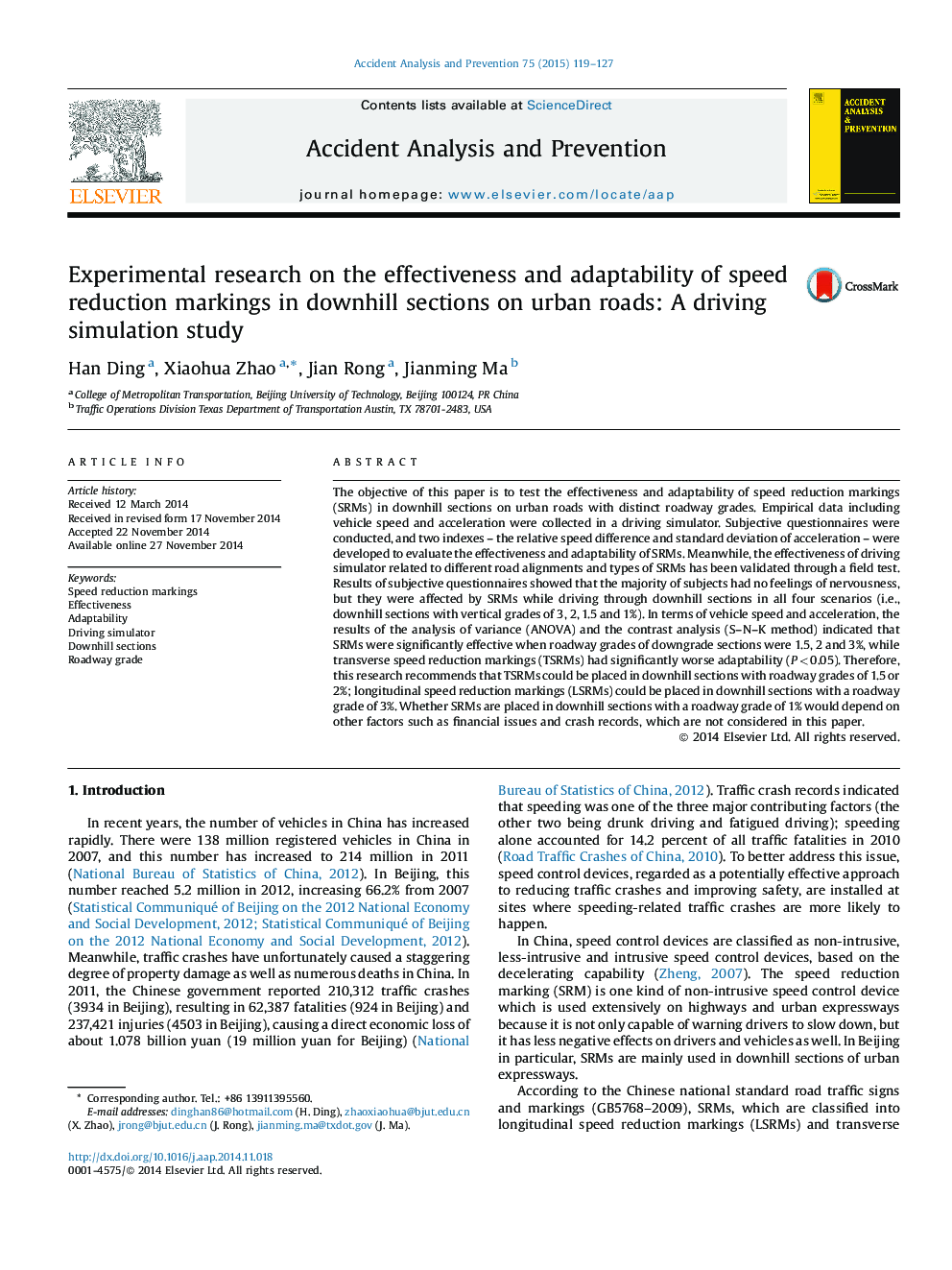| کد مقاله | کد نشریه | سال انتشار | مقاله انگلیسی | نسخه تمام متن |
|---|---|---|---|---|
| 572196 | 1452922 | 2015 | 9 صفحه PDF | دانلود رایگان |
• We evaluated the effectiveness and adaptability of speed reduction markings (SRMs).
• We did an empirical research based on a driving simulator, and the effectiveness of driving simulator based on this research condition was validated.
• We used the repeated measures analysis of variance (rANOVA) and the contrast analysis (S–N–K methods).
• Transverse speed reduction markings (TSRMs) could be placed in downhill sections with roadway grades of 1.5 or 2%; longitudinal speed reduction markings (LSRMs) could be placed in downhill sections with a roadway grade of 3%.
• Whether SRMs are placed in downhill sections with a roadway grade of 1% would depend on other factors such as financial issues and crash records.
The objective of this paper is to test the effectiveness and adaptability of speed reduction markings (SRMs) in downhill sections on urban roads with distinct roadway grades. Empirical data including vehicle speed and acceleration were collected in a driving simulator. Subjective questionnaires were conducted, and two indexes – the relative speed difference and standard deviation of acceleration – were developed to evaluate the effectiveness and adaptability of SRMs. Meanwhile, the effectiveness of driving simulator related to different road alignments and types of SRMs has been validated through a field test. Results of subjective questionnaires showed that the majority of subjects had no feelings of nervousness, but they were affected by SRMs while driving through downhill sections in all four scenarios (i.e., downhill sections with vertical grades of 3, 2, 1.5 and 1%). In terms of vehicle speed and acceleration, the results of the analysis of variance (ANOVA) and the contrast analysis (S–N–K method) indicated that SRMs were significantly effective when roadway grades of downgrade sections were 1.5, 2 and 3%, while transverse speed reduction markings (TSRMs) had significantly worse adaptability (P < 0.05). Therefore, this research recommends that TSRMs could be placed in downhill sections with roadway grades of 1.5 or 2%; longitudinal speed reduction markings (LSRMs) could be placed in downhill sections with a roadway grade of 3%. Whether SRMs are placed in downhill sections with a roadway grade of 1% would depend on other factors such as financial issues and crash records, which are not considered in this paper.
Journal: Accident Analysis & Prevention - Volume 75, February 2015, Pages 119–127
